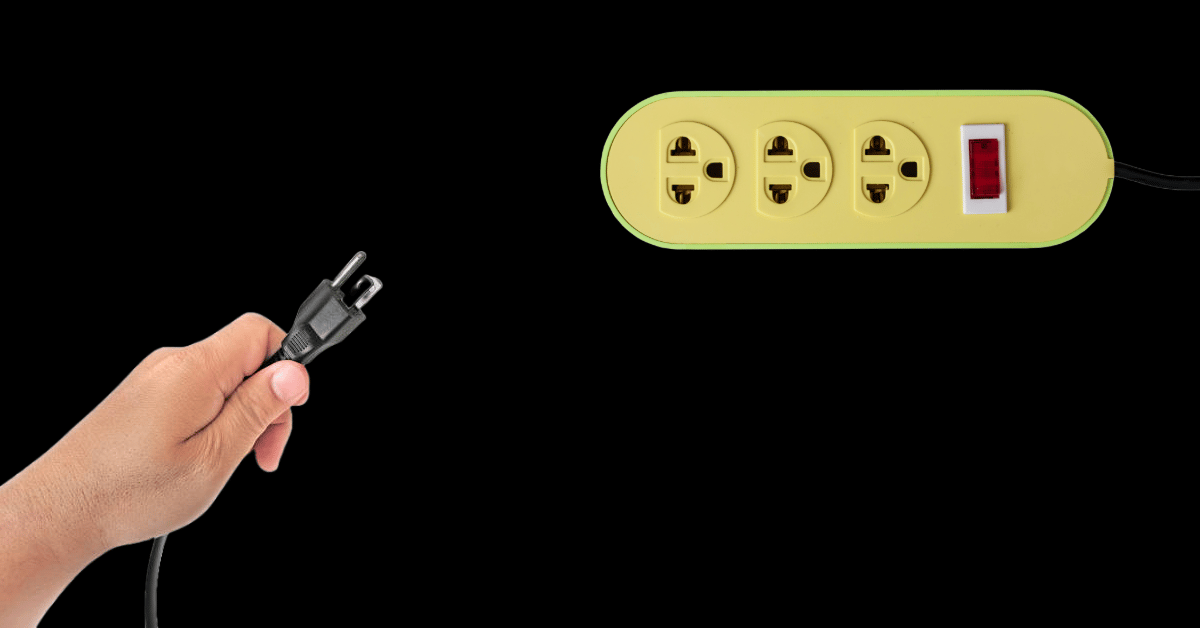Together with

For 20 years, the internet has bent itself around Google.
It's been all about optimising sites, headlines, and even recipes for search. That now feels dated AF. The new kid on the block? GEO, or generative engine optimisation. It's the new gospel for marketers trying to get cited by AI models that scrape, summarise, and spit out “position zero” content. That is, until things change again.
-Sophie Randell, Writer ✿
PRESENTED BY PLANABLE
Social content is now searchable. Is your strategy ready?
Your social content isn’t just for brand awareness anymore.
It’s showing up in Google. Powering AI answers. Driving buying decisions. So if you want to stay relevant and visible, your social and SEO strategies need to work together.
And now that Planable has teamed up with SEO powerhouse SE Ranking, this is not only doable—it’s trackable.
With these 2 tools, you can:
✅Create content that's picked up by Google, ChatGPT & AI search
✅Finally connect the dots between social reach & real impact
✅Turn social posts into decision-driving search results
Get 15% off both tools & start creating social content that drives real business results. 👇
WHAT’S HAPPENING IN MARKETING TODAY?
SEO becomes GEO, “Buy now, pay later” is just a survival tactic & TikTokers are the new news anchors

SEO is becoming GEO.
So, how do you "do" GEO? You use concise, citable chunks, clear authorship, structured data, lists, rankings, diagrams. Appearances on AI-favoured platforms like Wikipedia, Reddit, and YouTube also help.
Tools like Profound and Acme.bot promise to engineer brands into chatbot diets, mixing AI generation with human oversight in order to show up in search. The irony here is that ChatGPT may be quietly Googling, but traffic is still tanking. The web is becoming machine-written for machines. GEO is just the latest hustle to keep brands in the frame. (btw, if you’re looking for a tool to help your social content rank not just in Google, but in AI search, check out Planable & SE Ranking).
Not us using buy now pay later for Botox and concert tickets lol
“She even financed $900 of Botox and filler injections.” This particular part of an article published by The Wall Street Journal startled me. Have I done this? Abso-fkn-lutely. And in this economy? Don’t you dare judge me. When it has become increasingly hard to be approved for credit cards, to get hired, to pay for everyday items like GROCERIES – of course Gen Z is using BNPL as an option?
While many warn against the dangers of racking up an unnecessarily large debt, some believe it’s a smart way to navigate economic pressure. I say – how the hell else am I going to see Harry Styles and freeze my forehead within an inch of its life in the same few months?
The news as told from TikTok: what kind of information are we getting?
When the U.S. bombed Iran in June, TikTok news creator Aaron Parnas had a video up six minutes after Trump posted about it. No deep reporting. Just speed, platform fluency, and a knack for holding 4.2 million followers’ attention. TikTok isn’t exactly known for sober journalism (hello, bald-eagle “Thunderstruck” edits). But it’s where 39% of under-30s now get news.
Parnas, a lawyer with political roots, pulls from other outlets but reaches audiences traditional media can’t. Fans call it more “straightforward” than corporate news, though critics point out it’s often vibes-first, facts-later. The Washington Post even makes TikTok skits to play the algorithm.
Accuracy…? It's crowdsourced in the comments, apparently. And while Congress has tried to force TikTok’s Chinese owners to sell, the platform’s news ecosystem keeps growing. On TikTok, “news” can be anything new. And creators like Parnas are redefining how headlines travel, one fast, sticky video at a time.
-Sophie Randell, Writer
DEEP DIVE
The dark side of brand hype (and how to sidestep it)

In Greek mythology, the ouroboros is a serpent eating its own tail.
In marketing, it’s when the hype you’ve built starts consuming the very thing it was meant to protect: your product.
We’ve all seen it happen. The story gets so big, so viral, so frenzied that it stops being about the product’s actual usefulness and starts being about the sheer idea of owning it. The hype feeds sales, sales feed more hype, hype feeds more marketing, and around we go until the whole thing starts swallowing itself.
But hype is hype, right? Aren’t we supposed to be happy about our product flying off the shelves? Well, yes and no.
The Stanley Cup cautionary tale
For over a century, Stanley Cups were quietly excellent thermoses. Functional. Reliable. The kind of thing you bought once and kept for decades.
Then the TikTok girlies got involved. Suddenly, Stanley wasn’t selling hydration at all. It was selling status. Colour exclusives. Scarcity drops. Influencer hauls showing off entire rainbow-lined shelves. People camped outside Target like it was a freaking Harry Styles concert.
Stanley leaned all the way in. And why wouldn’t they? Demand was outpacing supply. Media coverage was free. Every drop sold out.
But here’s the risk: Stanley’s cultural moment is now bigger than its product story. People are buying faster for clout than for coffee. And when a brand’s relevance becomes untethered from its utility, it’s living on borrowed time.
The Ouroboros problem
This isn’t just about Stanley, obviously. Other brands have fallen into this trap too. Supreme, BeReal, even Crocs in some eras (hello, 2023). The moment the marketing becomes the product, you’ve entered ouroboros territory.
The healthy version:
Marketing amplifies real product value.
Storytelling deepens connection to something inherently worth owning.
The unhealthy version:
The product becomes interchangeable. Swap it out and the hype would just shift to the next shiny thing.
The drop is the dopamine, not the actual experience of using it.
And clearly it works (albeit temporarily).
Hype sells fast. Scarcity creates urgency. Social proof snowballs. You can ride a viral wave and look like a genius. That is, until the current changes.
Novelty burns out quicker than loyalty. If your retention depends entirely on keeping the spectacle alive, you’ll need to keep outdoing yourself until you either run out of ideas… or the audience runs out of interest. The likely is the latter.
How, then, do we hype without hollowing out?
If you want longevity, the hype has to serve the product, not replace it. That means:
Anchor to utility: Even in the drop frenzy, remind people why the product is actually good.
Evolve the experience: Don’t just release new colours; improve the design, add features, or enhance the service.
Measure what matters: Look at repeat purchases and post-trend engagement, not just launch-day sellouts.
At the end of the day, it’s about leaving your mark, not just a moment.
The ouroboros is a closed loop. But your marketing doesn’t have to be. The brands that last break the cycle by feeding the product as much as the hype, building something that holds up after the hashtags fade.
Because in a saturated world, your legacy isn’t the frenzy you sparked. It’s the fact that when the dust settles, people are still using what you made and telling the story for you.
-Sophie Randell, Writer
TREND PLUG
That’s…bad advice

This one’s for the marketers who’ve ever had to smile through truly cursed feedback.
The trend? Pretending to be on the phone next to someone, usually a CEO, colleague, friend, or partner, and asking for advice about their exact area of expertise. Then, without missing a beat, you confidently repeat the worst advice imaginable back to the imaginary caller.
The deadpan delivery paired with your teammate’s live reaction? Viral gold. It’s perfect for showing off internal dynamics, dragging chaotic client suggestions, or mocking the marketing advice that absolutely no one asked for.
How you can jump on this trend:
Set up a shot in your office or team environment. Pretend to take a phone call and loudly ask a question that someone in the room is definitely qualified to answer. Then deliver your “bad advice” confidently, like it’s the smartest thing you’ve ever heard.
Keep your tone straight, your delivery serious, and your teammates as confused as possible. Use this video for inspo and tag it under trending business/comedy sounds to boost reach.
A few ideas to get you started:
“Pitching new packaging ideas → ‘Can we make it… edible?’”
“How should we announce the rebrand? → ‘Let’s get someone to freestyle rap it’”
“Asking our CEO how we should launch the product → ‘Just post it once and hope for the best’”
- Amy Thomson, Social Media Manager
FOR THE GROUP CHAT
😂Yap’s funniest home videos: HE’S NOT COLD
❤How wholesome: Joybait???
😊Soooo satisfying: Driveway power washing
🍝What you should make for dinner tonight: Italian Bread Pizza!
ASK THE EDITOR

My business partner and I are thinking about starting a podcast for our makeup brand. Do you think it's worth doing? -Sam
Hey Sam!
Creating a podcast is a great way to create content for your brand. Because not only will you have the longform version, but you can also cut that up into shorts to post on your social channels. It's also a cool way to get to know other people in your industry by bringing them on as guests.
The thing about podcasts, though, is a lot of people start them and very few make more than a few episodes. So if I were you, I'd start recording your first few episodes ASAP.
Then just keep getting your reps in, learning as you go. Don't spend too long in the planning phase—otherwise you may never actually start!
[You also might want to check out Your dummy-proof guide to (finally) starting a podcast]
- Charlotte Ellis, Editor ♡

